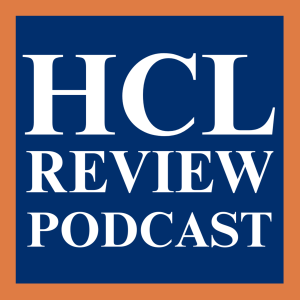Episodes

Tuesday Dec 10, 2024
Tuesday Dec 10, 2024
Abstract: The modern workplace is undergoing significant changes as the Gen Z cohort, born between the mid-1990s and mid-2000s, enters the workforce. Gen Z has very different expectations compared to prior generations, demanding flexible work arrangements, continuous learning opportunities, and a strong sense of purpose in their work. To attract and retain top Gen Z talent, organizations must take a holistic and innovative approach, moving beyond standard HR policy adjustments. This article outlines three key challenges faced in engaging Gen Z employees - disengagement with traditional work structures, demand for continual skill development, and expectations of strong organizational purpose. It then provides research-backed recommendations for embracing flexible and remote work, offering continuous learning and skill-building opportunities, and aligning work with a clear organizational purpose and values. Successful implementation of these innovative workforce models is critical for organizations to build a sustainable talent pipeline for the future.

Monday Dec 09, 2024
Monday Dec 09, 2024
Abstract: This article explores the importance of accountability within organizational culture and provides actionable insights for leaders to optimize accountability and achieve world-class status. Research shows that accountability is a pillar of successful cultures, linked to higher individual and team performance. Key strategies include establishing clear expectations, fostering two-way communication, learning from mistakes, and benchmarking accountability metrics against industry standards. By operationalizing these assessment and strengthening techniques, leaders can cultivate a culture where employees feel empowered, responsible, and accountable to consistently deliver exceptional results. The article concludes that accountability is a crucial driver of organizational excellence in today's competitive business landscape.

Sunday Dec 08, 2024
Sunday Dec 08, 2024
Abstract: This article examines the damaging rise of "blame cultures" in many organizations, where fear of failure, lack of psychological safety, and individual-focused reward systems incentivize employees to deflect responsibility rather than collaborate and learn from mistakes. The article outlines the significant costs of blame cultures, including stifled innovation, eroded trust, increased employee stress, and overall stagnation. To counter this, the article proposes research-backed strategies for leaders to cultivate a "just culture" of transparency, accountability, and continual improvement. Key tactics include leading by example, clarifying behavioral expectations, focusing investigations on systemic factors rather than individuals, and recognizing those who admit errors. Case studies from high-reliability industries like aviation and healthcare demonstrate how implementing just culture principles can transform organizational cultures and deliver lasting benefits. Ultimately, the article argues that moving beyond blame is essential for companies seeking sustainable excellence in today's competitive business landscape.

Saturday Dec 07, 2024
Saturday Dec 07, 2024
Abstract: This article explores how leading through service can cultivate purpose, strengthen organizational culture, and build trust. Through a review of scholarly literature and real-world examples, key tenets of service leadership are examined, including prioritizing people through active listening, empowering employees through distributed leadership models, and leveraging core competencies to positively impact communities. Research indicates servant leadership correlates strongly with employee engagement, accountability, innovation, and long-term profitable growth. The article argues that in today's complex world, leaders who serve others by fostering belonging, sparking creativity, and inspiring whole-person commitment can empower both individuals and organizations to achieve shared goals. Practical applications and specific industry cases are provided to demonstrate how organizations have operationalized service-oriented approaches to positively impact their workforce, customers, and the communities in which they operate.

Saturday Dec 07, 2024
Saturday Dec 07, 2024
Abstract: This article builds a robust business case for purpose-driven leadership, demonstrating through research and industry examples how effective leaders who clearly articulate an inspiring organizational purpose can drive significantly higher employee engagement, customer satisfaction and loyalty, as well as superior long-term financial performance - with purpose-oriented companies consistently outperforming peers. The paper outlines a comprehensive framework for understanding leadership as a process of influencing a group towards common goals, and highlights how defining a compelling "why" or purpose is central to this, going beyond just holding formal authority. Practical strategies for implementing purpose-driven leadership are provided, using examples from companies like Patagonia and Microsoft to illustrate the positive outcomes, as the paper makes a compelling argument that in today's interconnected world, leaders who can inspire stakeholders with a clear and motivating sense of purpose are best positioned to maximize organizational potential and achieve sustained success.

Saturday Dec 07, 2024
Saturday Dec 07, 2024
Abstract: Traditional notions of heroic leadership are giving way to a recognition that true strength comes from vulnerability and shared humanity, as research shows that leaders who model transparency about weaknesses, mistakes, and lack of knowledge foster greater motivation, cooperation, and performance among their teams. Organizational experts now emphasize the importance of cultivating cultures where vulnerability is not just accepted, but expected, through strategies like leaders modeling vulnerability from the top, establishing psychological safety, providing channels for candid feedback, promoting humble inquiry, celebrating imperfection, and consistently practicing vulnerability - approaches that can be tailored across industries to unlock the power of human connection and create optimal conditions for growth, empowerment, empathy and creativity within any organization.

Saturday Dec 07, 2024
Saturday Dec 07, 2024
Abstract: The future of work promises dramatic changes to human capital management, with technological advances and generational shifts disrupting traditional jobs and skills requirements. To succeed amid this disruption, organizations must adopt talent-centric strategies that focus on developing employees as a key asset. This involves rethinking the employee-employer relationship, shifting to a "talent mindset" that emphasizes continuous development, flexible career paths, and a holistic employee experience. Innovative recruitment strategies leveraging alternative data and immersive experiences will be needed to source in-demand skills. Continuous reskilling and upskilling initiatives, including micro-credentials and mentorship programs, will be critical. Nurturing inclusive, multi-generational teams that leverage diverse perspectives will also be essential. Enabling internal talent mobility and embedding diversity, equity and inclusion further strengthen the talent pipeline. Finally, the ethical deployment of emerging technologies, with a focus on augmenting rather than replacing human skills, is crucial. Organizations that proactively implement these talent-centric strategies will be well-positioned to navigate the evolving workforce landscape of 2024 and beyond.

Thursday Dec 05, 2024
Thursday Dec 05, 2024
Abstract: The article explores how organizational systems can unintentionally disadvantage certain groups and stifle innovation, despite being designed for stability and consistency. Drawing on research in systems thinking and social change, it outlines strategies for organizational leaders to identify and challenge systemic barriers from within. Key steps include: collecting quantitative and qualitative data to reveal hidden biases; reframing narratives and assumptions through education and awareness; co-creating equitable policies and practices with stakeholder input; and fostering accountability and celebration of progress. Through humble, collaborative leadership that engages the entire system, the article demonstrates how even entrenched cultures can transform to cultivate greater fairness, inclusion, and innovative potential. Ultimately, it argues that by continually aligning organizational values with evolving equitable practices, a more just future can emerge.

Wednesday Dec 04, 2024
Wednesday Dec 04, 2024
Abstract: This article examines common misguided career advice given to women, and provides research-backed solutions to help them overcome these limitations and thrive. It counters outdated notions that women should temper ambition, avoid negotiating pay, prioritize likeability over competence, and assume having children will derail their careers. Instead, the article emphasizes the importance of women being confident advocates for themselves, leveraging mentorship and organizational policies supporting work-life integration, and prioritizing job performance to achieve their full potential without unnecessary constraints. By replacing self-limiting advice with constructive, evidence-based strategies, the article demonstrates how empowering women's authentic leadership and healthy self-promotion benefits not just individual careers, but organizations and society as a whole.

Tuesday Dec 03, 2024
Tuesday Dec 03, 2024
Abstract: This paper explores the research-backed benefits of gaining broad, diverse work experiences early in one's career, rather than immediately pursuing a narrow "dream" role. While passion is important, jumping straight into a specialized field can leave professionals ill-prepared for the complex realities of the modern working world. Social science and management research demonstrate that exposure to various functions, industries, and responsibilities promotes flexibility, strategic thinking, and well-rounded competencies - skills prized by top employers. By building expansive professional networks and discovering alternative strengths outside their initial passions, early career "generalists" emerge uniquely qualified to adapt and excel as industries evolve. The paper highlights how leading organizations in consulting and technology value this type of multi-faceted experience, allowing new hires to rotate through different roles, projects, and locations, and outlines practical strategies for professionals to facilitate broader early learning - an approach that proves the ideal path for developing future-proof skills and positioning oneself for sustained career success, even in ultimately achieving one's most ambitious goals and dreams.







